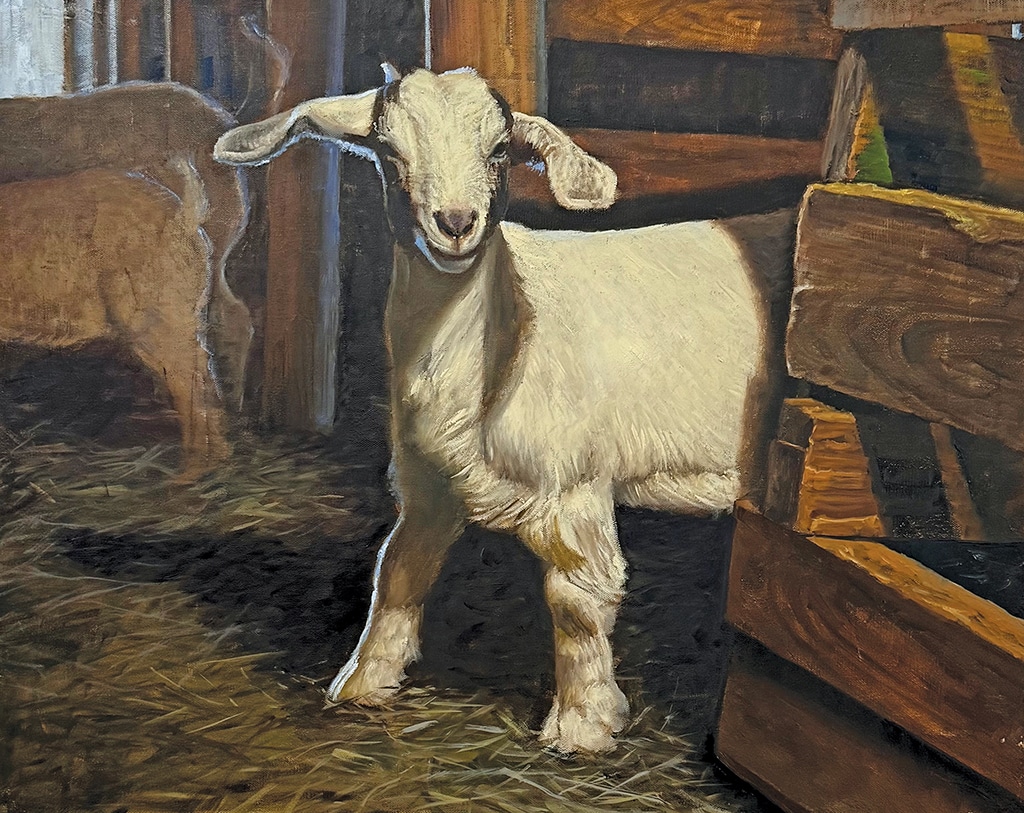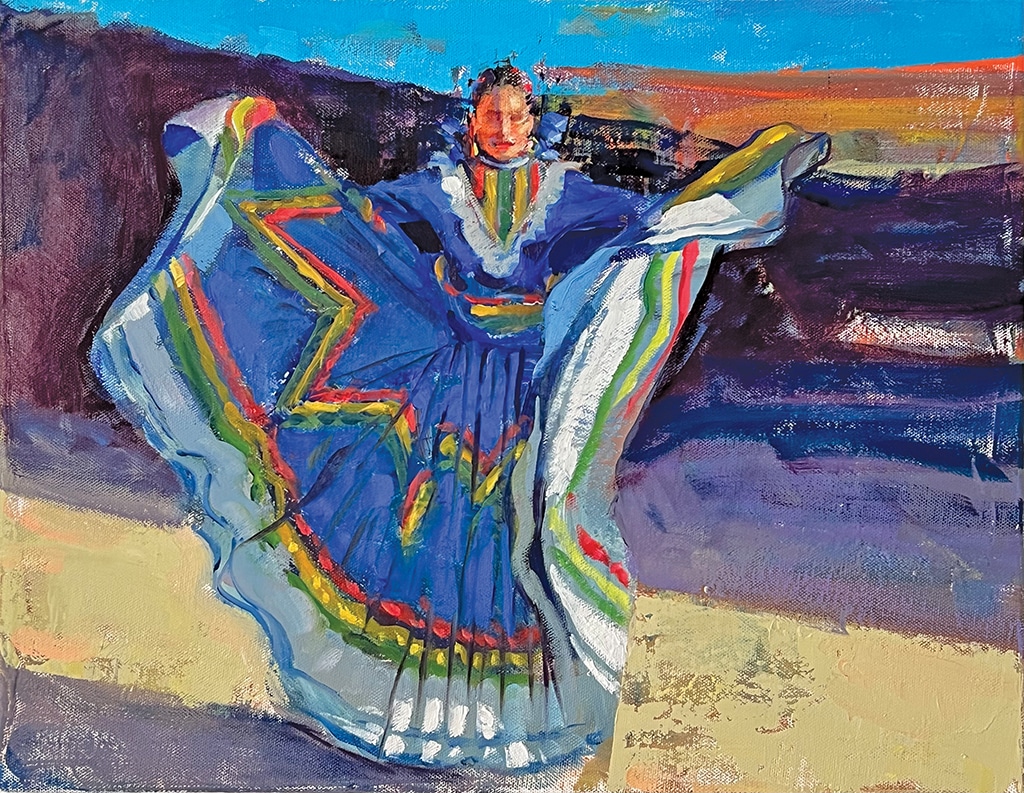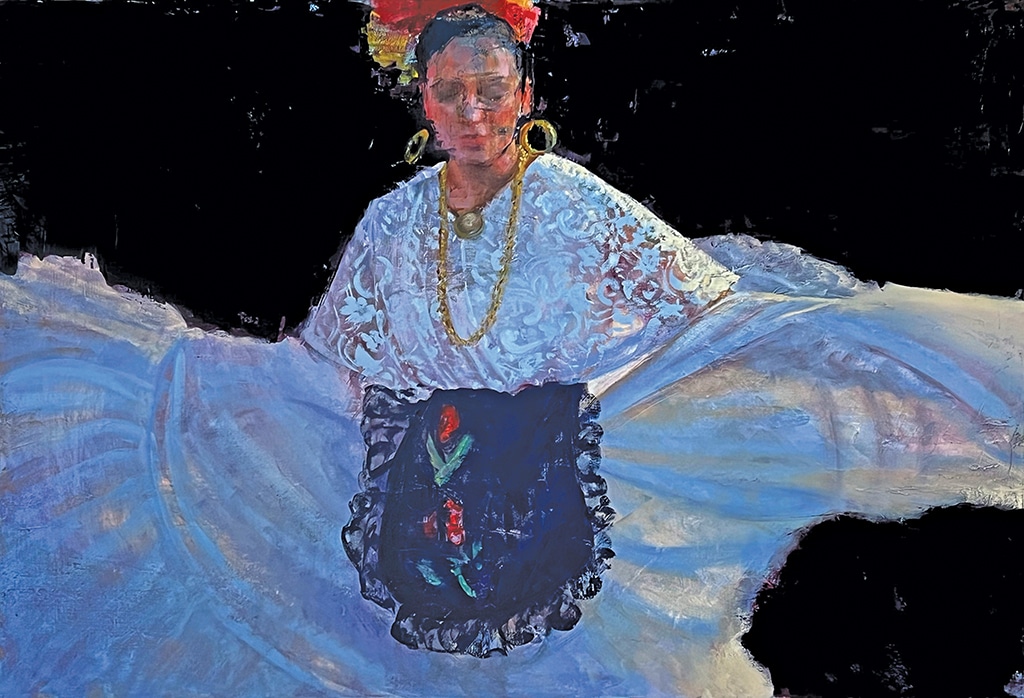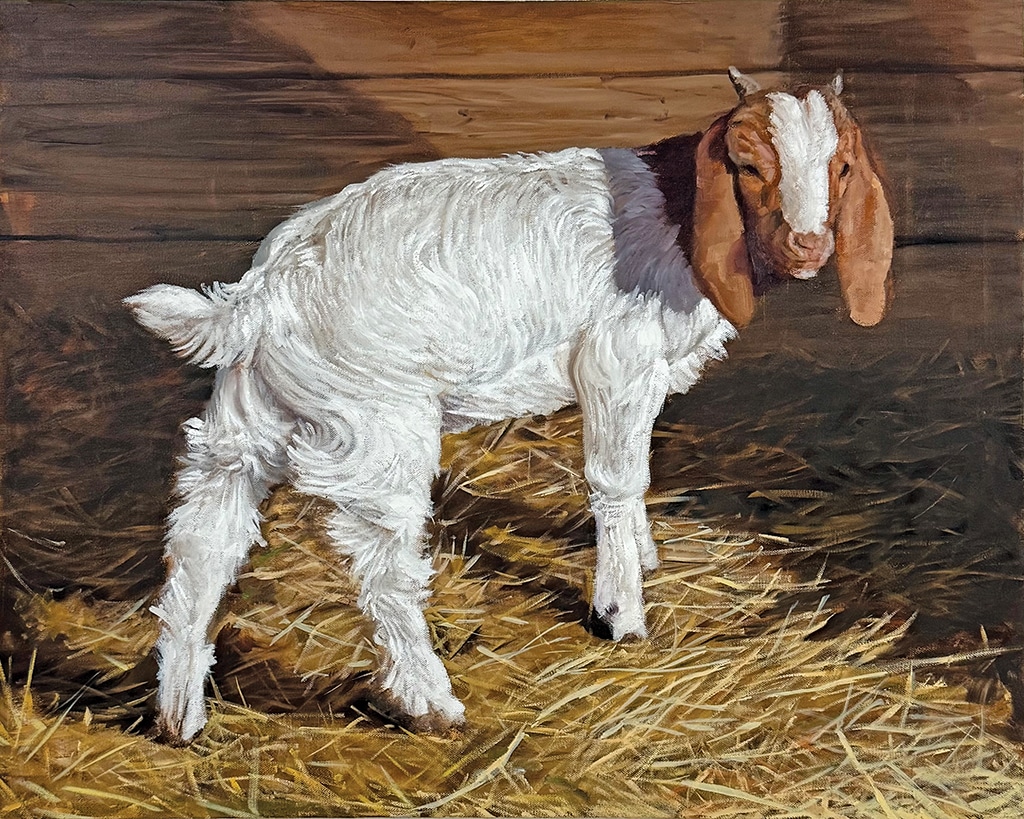Williamston Winter Barn (oil on canvas, 36×48″, 2024)
Identity, Heritage, and Place in the Work of Nicolas V. Sanchez
by Rebecca M. Alvin
Nicolas V. Sanchez’s work has a very strong sense of place. But there are multiple places represented in them, revealing his bicultural background and the multiple places that makeup his notion of home, and therefore of identity.
“Exactly. That’s why it’s confusing for me. That’s why I’m a confused artist,” he laughs.

The child of Mexican immigrants, Sanchez grew up in Michigan and now lives in New York City, but Mexico lives inside of him as his home by heritage, if not by birth. The mixing of cultures is sometimes seen as a dilution of each of them or, as Sanchez alludes to, a “confused” identity. In reality, it is neither, and it is also not as unique as it is often presented to be, at least not in the United States.
“As I’m making work about my identity, I’m realizing that my identity has a lot to do with inheritance, as well. And the inheritance of these cultures and these ideals and these values that sometimes overlap and sometimes don’t—Like some of the values in Mexican culture don’t line up with American values. And so that’s, those are waters that I’ve had to tread my whole life, as well as my brothers, and I think what I’m learning is, as I’m sharing my work internationally, that it’s not just a Mexican-American thing. It’s a whatever country/ethnicity you want to put in front of ‘American,’ right? You know, Italian-American, African-American—I mean, everybody has their own experience that is similar to this and they are juggling more than one ideal system.”
Sanchez has been exhibiting with Rice Polak Gallery in Provincetown for many years, but gallery owner Marla Rice says she believes it’s been at least 10 years since he’s had a show there, for a variety of reasons. This weekend, his work is included in a group show that includes photographer Susan Mikula and painter Jessica Pisano, who is new to Rice Polak. Together, the three artists provide an interesting collection of works. But Sanchez has exhibited around the world, experiencing great critical acclaim and success for his intricate drawings made with ballpoint pen, which have attracted press and celebrity collectors for their incredibly meticulous, yet nuanced lines, as well as for his stunning paintings of dancers wearing traditional Mexican dresses, moving in them, displaying their color and a sense of their fabrics, clearly inspired by his mother’s work as a seamstress.

“She took over the basement and had all these sewing tables and sewing machines and fabrics everywhere. And so we that was kind of like a childhood memory. That was like a backdrop. And, you know, when you’re little, you don’t really know, you’re not paying attention. I’m like playing with my Ninja Turtles and Batman or whatever while she’s sewing late into the night. And so, I was like her studio companion of sorts,” he recalls.
“I learned a lot from her. And so, these dresses or these dancer paintings are actually about the dresses and not about dance or movement. I just have the dancers dance and move because that is what the dresses are made for and it does activate the dress,” he explains. “So, although the movement and the dancers are interesting, and yes, it’s also simultaneously about my culture, it’s mostly about my family history, specifically childhood memories of my mom making these dresses.”
The paintings at Rice Polak that feature the dresses more clearly show this, more about the color and patterns, the women’s faces impressionistically blurred, while larger works that will not be on view in this show, such as Rosella and La mariposa en Jalisco, do invite delight in their depictions of the movements of the skirts and the details of the women wearing them.

His father is the one who taught he and his brothers to draw, though. And there was no intolerance for the idea of Nicolas and his two brothers following artistic paths. In fact, one brother is a baritone singer and the other makes pendants sourced from stones around the lakes in Michigan. He says his father learned to draw “just because he comes from Mexico. Everybody in Mexico has like this strange ability to be good at something creative somehow.” And while his family deeply influenced and supported his creativity, he also names other artists as inspirations, such as John Singer Sargent, Joaquín Sorolla, and Rembrandt. “But my mom is the ultimate and first artist inspiration, even before I knew it. That’s what those paintings are about.”
Also on view in the Provincetown show are images that speak of Sanchez’s background growing up in the Midwest. They feature more earthy tones, farm animals, in one case, a decaying old barn (Williamston Winter Barn) that is striking in its muted palette and attention to the lifeless farm building, contrasted against the more lively dress paintings, paintings of children and of an elderly horse, and especially the goats he depicts with such care and attention to their individuality.

Collectively, these paintings demonstrate Sanchez’s interest in painting his heritage, his multiple identities and homes, and the things that interest him. In a time when many artists wonder what they should be doing or whether or not what they are doing is still important with all that is happening under the current administration, Sanchez is unflinching and clear.
“I’m thinking of those things, but I’m also not bending over because Trump wanted to f–k us over. Like, the way that I’m going to retaliate is by living my life louder and prouder. And I’m going to continue to represent what I represent. And so, I’m going to continue to make paintings about what it’s like to be multicultural. I’m going to continue to make paintings about what it means to balance Mexican culture in the United States. Because that’s important. That’s more important than if I say I make a painting that says ‘F. Trump’ by painting Alligator Alcatraz, or making some kind of criticism that some kind of news anchor can make more eloquently than I can,” he says.
“It’s like, you want me to start, out of nowhere, painting kids in cages and people in detention centers and things like this? Like, that’s a hard left! That’s a hard left turn right there. So, I just feel like my responsibilities should be to continue my craft, continue to share my work, continue to be exhibiting in Provincetown. And, you know, so this year—I haven’t announced it yet—but I’m exhibiting in five different cities, putting my work EVERYWHERE. How about that!?”
Nicolas V. Sanchez’s work will be on exhibition July 31 – August 13 at Rice Polak Gallery, 430 Commercial St., Provincetown., There is an opening reception with the artists on Friday, August 1, at 7 p.m. You can see additional work by Sanchez on his website: nicolasvsanchez.com. For more information call 508.487.1052 or visit ricepolakgallery.com.











